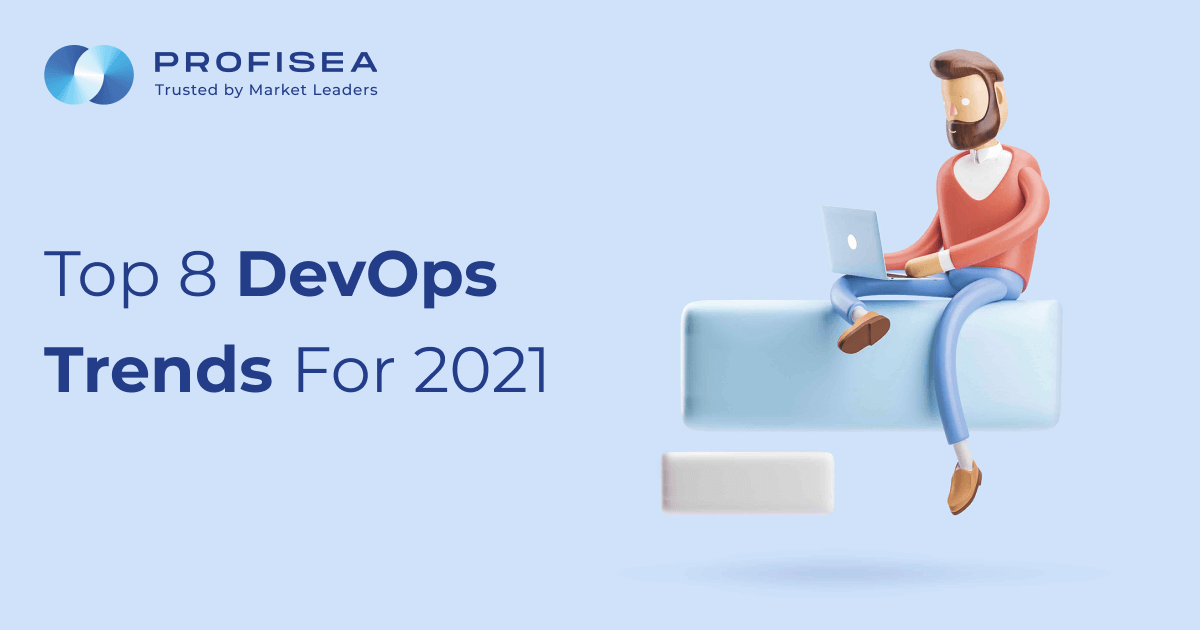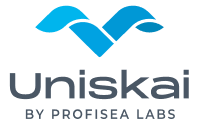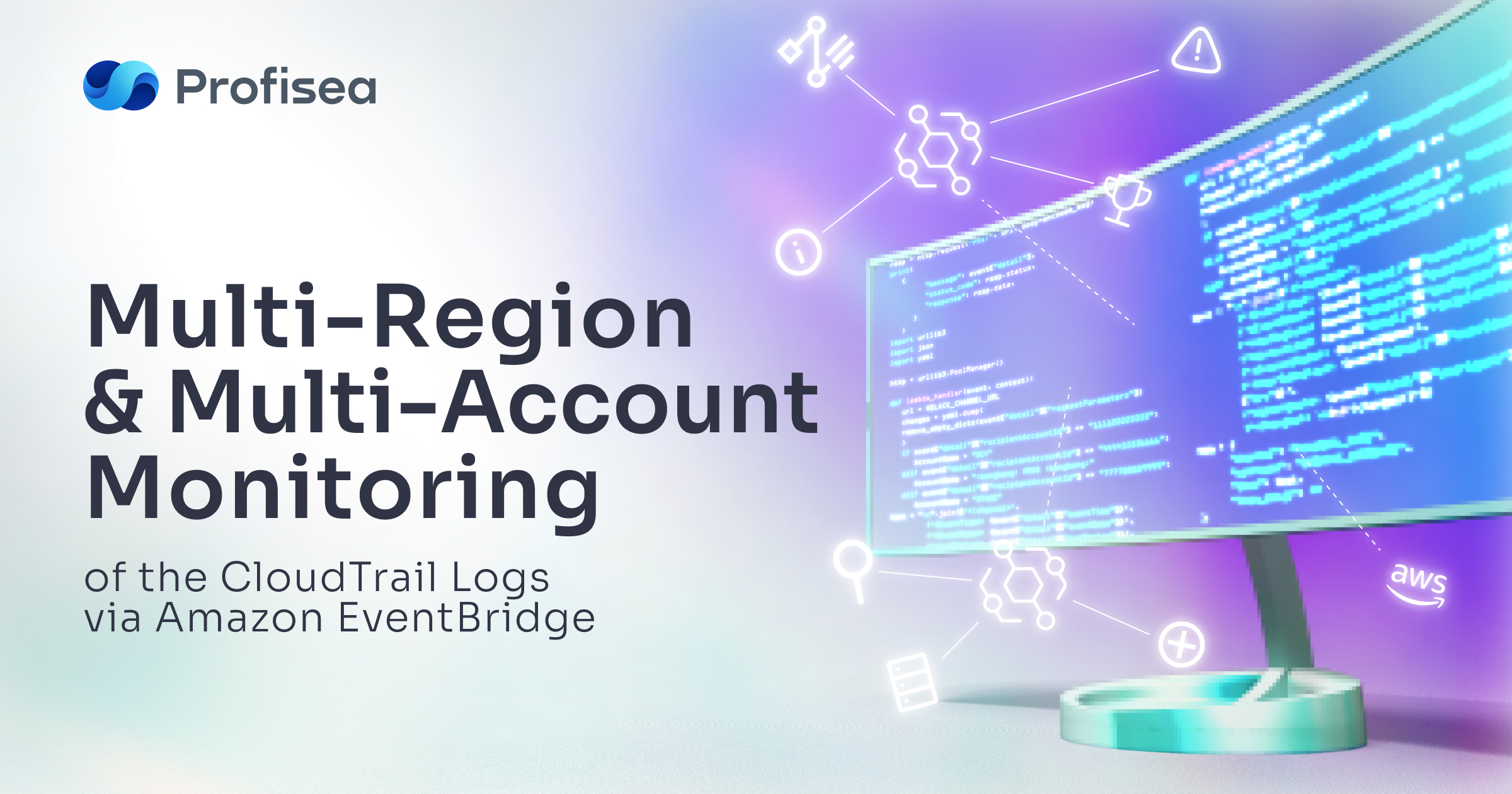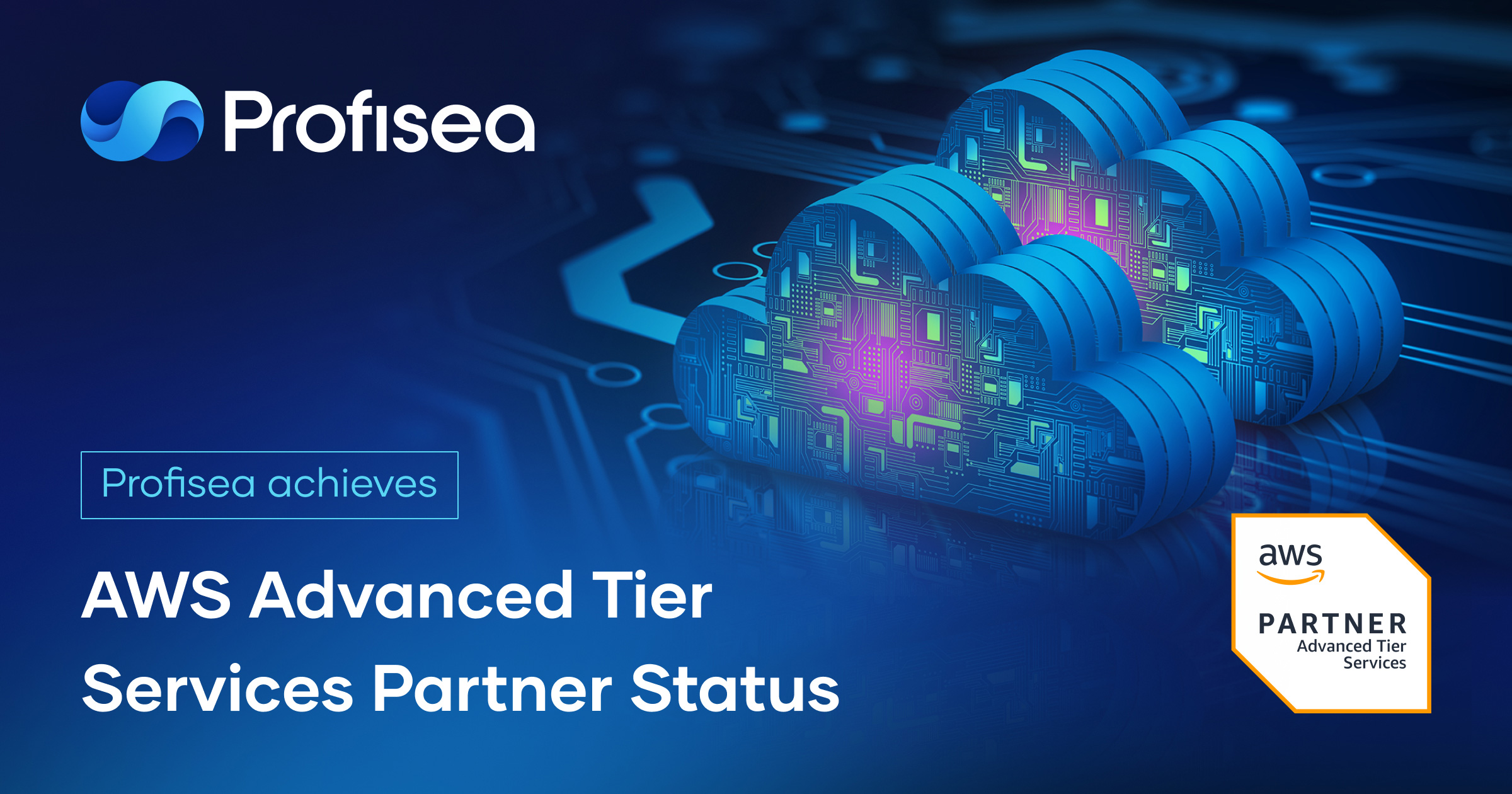Top 8 DevOps Trends for 2021
To say the least, 2020 was full of challenges and disruptions for almost any business industry. However, many companies were saved behind such shields as AI, ML, DevOps, and cloud technologies. Automation of routine office work, on-premise processes, and other manual tasks became a must-have during the COVID-19 times.
Thus, Profisea decided to explore major cloud computing trends to help you better prepare for your business automation journey in 2021.
The bright future of DevOps engineering
As one of the major players in the adoption of automation culture, DevOps came to the rescue when we needed it most. Adjusting to ‘the new normal’ way of work, enterprises quickly adopted rapid automation of everything related to CI/CD pipelines, testing, infrastructure provisioning, operations, production, analytics, advanced cloud computing, and monitoring. IDC study showed that the worldwide DevOps tools market keeps demonstrating growth every year. It was estimated at $5.2 billion in 2018, and the forecast says it will reach $15 billion by 2023. Going back in time, several years ago DevOps was hardly considered a serious game-changer. Now, the organization-wide adoption of DevOps increased from ten percent in 2017 to seventeen percent in 2018.
The pandemic positively impacted the state of DevOps in 2020
The public and private cloud companies have flooded the global market this year. The investors have poured nearly $9.5 billion in private cloud companies in Israel and Europe alone. This tendency indicates the growth of funding close to 30 percent compared with previous years.
The Accelerated Strategies Group and CloudBees research also revealed some interesting statistics. The study discovered that due to the lockdown limitations the need for business automation investments increased by 61.6 percent, and 52 percent of companies sped up their acceleration to the cloud, focusing on DevOps initiatives.
DevOps Trends to Follow in 2021
It’s safe to assume that the future of work will heavily depend on robust artificial intelligence and DevOps engineering. More and more organizations will benefit from it by following a holistic approach and seeking agility, speed, flexibility. To achieve these goals and deliver high-quality products to clients faster, they will need a dynamic DevOps strategy and an appropriate set of tools.
How to choose the right path? Here are some tips.
#1 Artificial intelligence and machine learning will empower DevOps
Another IDC report, titled “Worldwide Artificial Intelligence Spending Guide,” revealed that 75 percent of enterprise applications will be using various forms of artificial intelligence in 2021. AI and ML will optimize the test cases and revolutionize and foster DevOps practices’ future growth.
Utilizing AI’s ability to handle the massive data sets, enterprises will enhance their DevOps framework’s efficiency and performance index. Any issues or problems you might be having during infrastructures’ automation will be solved much faster and with less effort. What’s more, AI and ML accelerate deployment without breaking up a continuous delivery cycle.
#2 Cloud-native environment — the road to advancements and innovations
The reliable DevOps market trends for 2021 include cloud-native development. It means having a container-based ecosystem for all your architecture and infrastructure elements. Cloud computing helps to create the dynamic development cycle with faster deployments, improved scalability and visibility across all platforms.
Moreover, this technology shortens time to market, which grants a competitive advantage and ensures business resilience. Cloud-native DevOps is projected to reach $530 billion in spendings. Eighty percent of enterprise applications will shift toward hyper-agile architectures and cloud infrastructures by 2025.
#3 The rise of container registry tools
Container instruments like Kubernetes have been around for a while now, so it’s no surprise that the DevOps field in 2021 will see the rise of container registry services. This technology helps you store and manage the artifacts and cover all dependencies for a smooth SDLC. Using containers, one can faster deliver updates, switch between programming frameworks, and even improve collaboration between all parties involved in the DevOps processes.
#4 DevSecOps: security and observability are a matter of the utmost priority
In the new world of remote operations, cloud cybersecurity is essential to consider. DevSecOps approach combines best practices of keeping a focus on security and observability in all areas of software development, delivery, and operations. Which, in turn, mitigates risks and minimizes the vulnerabilities in the delivered applications.
DevSecOps bridges a security awareness gap between IT and business sides. It allows identifying cyber threats at the early stages of development and cutting the costs for fixing the issues. The DevSecOps market is forecasted to reach $5.9 billion by 2023.
#5 Distributed cloud — public cloud for location independence
According to Gartner, distributed cloud (DC) is the future of cloud. While this technology distributes cloud services between different physical locations, the public cloud provider will still be responsible for their operation, governance, maintenance, and evolution. You can benefit from DC by avoiding latency issues and data protection regulations, at the same time reducing expenses on complicated and location-dependent private cloud solutions.
The DC types:
- On-premises public cloud;
- Global network edge cloud;
- IoT edge cloud;
- 5G mobile edge cloud.
#6 The ascension of DevTestOps to improve SDLC
Even while being one of the newest DevOps trends for 2021, this QA automation approach most likely will flourish across early and end-to-end testing. Continuous testing practices are closely entwined with the DevOps workflow, aiming to improve the product’s quality and eliminate business risks. As a synergy of development, testing, and operations, DevTestOps covers the vast scope of QA activities, cybersecurity threats, and market impact. By adopting DevTestOps, you can spend more time on innovations rather than bug fixing.
#7 Increased demand for microservices
Microservices and DevOps have become synonymous long ago. If you need the most scalable, distributed, and flexible architecture for your platform, microservices are the solution. They provide such a significant advantage as the possibility to build and deploy new components rapidly. And the entire application won’t fall apart when one team changes some part of it. With device- and platform-agnostic microservices, you can adjust to the constantly evolving market and emerging customers’ needs.
#8 Rise of the DevOps assembly lines
The main idea behind this trend is automating and connecting numerous activities performed by several teams involved in a production cycle. An assembly line glues together various Dev, Sec, Test, and Ops tasks into streamlined and optimized, event-driven workflows. Simply put, a DevOps assembly line is a “pipeline of pipelines.” It orchestrates automation and consistent delivery with higher interoperability, and much more.
To recap
As terrible as it was, 2020 has accelerated the rapid growth of the DevOps and cloud computing industry. Various trends have emerged in record time, and we’ve reviewed just a handful of them. The only thing left to say is that 2021 will be revolutionary in terms of work and business operations. And the DevOps movement will keep growing exponentially to become mainstream in the era of all things remote.




